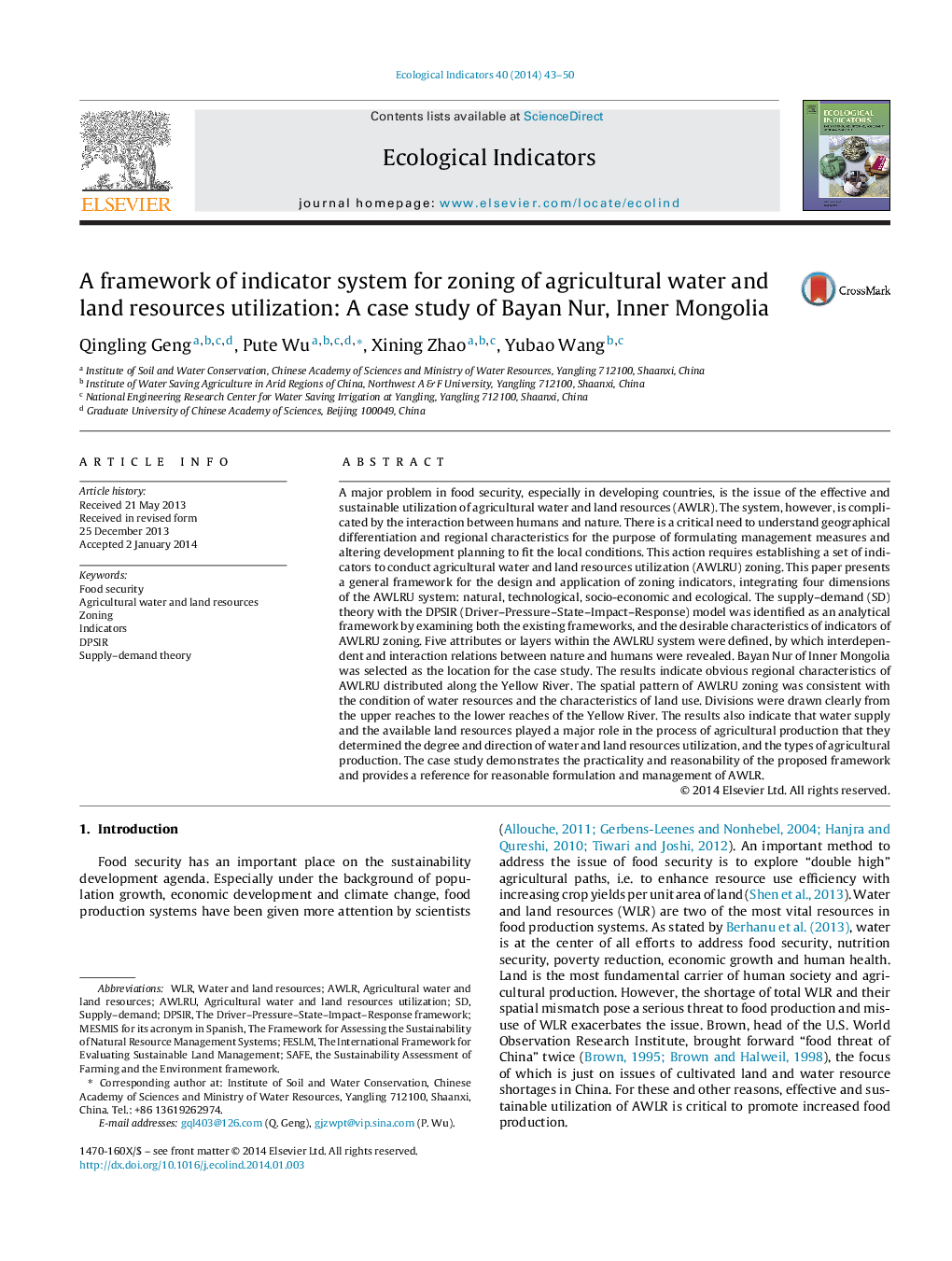| کد مقاله | کد نشریه | سال انتشار | مقاله انگلیسی | نسخه تمام متن |
|---|---|---|---|---|
| 4373229 | 1617161 | 2014 | 8 صفحه PDF | دانلود رایگان |

• The SD theory combined with DPSIR framework is established for designing indicators of AWLRU zoning.
• The proposed framework can decipher the causal relationships at each of the levels in the system of AWLRU.
• Water resources conditions play a key role on AWLRU in water-scarce area, such as Bayan Nur.
• The supply level determines the degree and direction of water and land resource utilization and types of agricultural production.
A major problem in food security, especially in developing countries, is the issue of the effective and sustainable utilization of agricultural water and land resources (AWLR). The system, however, is complicated by the interaction between humans and nature. There is a critical need to understand geographical differentiation and regional characteristics for the purpose of formulating management measures and altering development planning to fit the local conditions. This action requires establishing a set of indicators to conduct agricultural water and land resources utilization (AWLRU) zoning. This paper presents a general framework for the design and application of zoning indicators, integrating four dimensions of the AWLRU system: natural, technological, socio-economic and ecological. The supply–demand (SD) theory with the DPSIR (Driver–Pressure–State–Impact–Response) model was identified as an analytical framework by examining both the existing frameworks, and the desirable characteristics of indicators of AWLRU zoning. Five attributes or layers within the AWLRU system were defined, by which interdependent and interaction relations between nature and humans were revealed. Bayan Nur of Inner Mongolia was selected as the location for the case study. The results indicate obvious regional characteristics of AWLRU distributed along the Yellow River. The spatial pattern of AWLRU zoning was consistent with the condition of water resources and the characteristics of land use. Divisions were drawn clearly from the upper reaches to the lower reaches of the Yellow River. The results also indicate that water supply and the available land resources played a major role in the process of agricultural production that they determined the degree and direction of water and land resources utilization, and the types of agricultural production. The case study demonstrates the practicality and reasonability of the proposed framework and provides a reference for reasonable formulation and management of AWLR.
Figure optionsDownload as PowerPoint slide
Journal: Ecological Indicators - Volume 40, May 2014, Pages 43–50